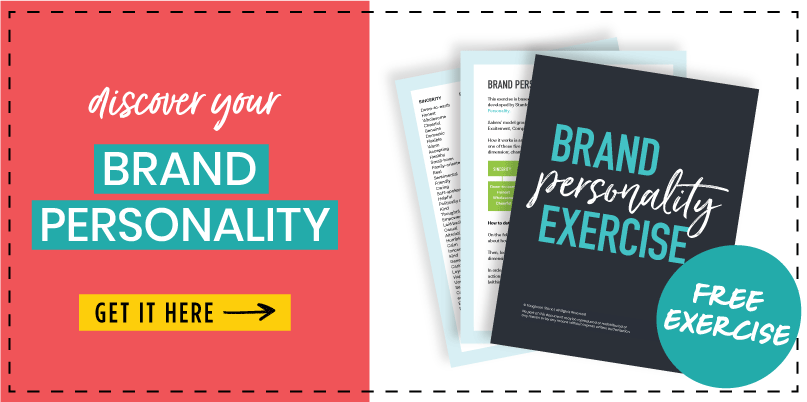“Brand strategy” sounds like something you can put off. After all, you’ve got a website to build, content to create, offers to deliver — so you tell yourself, “I’ll wing it for now and figure out the strategy later.”
But here’s the thing: if you’re not clear on what your brand is, who it’s for, and why anyone should care, you’re just guessing, and guessing makes marketing your business exponentially harder.
In this post, I’m cutting through the jargon to explain what brand strategy actually is, why it matters, and how you can use it to connect with your ideal customers.
What Is Brand Strategy?
Brand strategy is the intentional process of shaping how people feel about your business so they remember you, trust you, and ultimately choose you.
It answers questions like:
- Why do you exist (beyond just making money)?
- What problem do you solve?
- Who do you solve it for?
- What makes your approach different or better?
- What do you want to be known for?
These answers form the foundation for your content, your visuals, your offers, your sales pages — literally everything:. So if you skip creating a strategy for your brand, you risk blending in, confusing your audience, or attracting the wrong people (the ones who ultimately won’t buy).
3 Things You Need to Build a Magnetic Brand
Before you dive into marketing, content creation, or social media tactics, you need to lay the groundwork. These three elements are the heart of your brand strategy — and when they’re clear, everything else becomes easier (and more effective).
Let’s break it down.
1. A Clear Offer That Solves a Real Problem
This is non-negotiable. If people don’t know they need what you’re selling — or if your offer is vague — even the strongest brand visuals or clever messaging won’t help.
Start with these questions:
- What pain point are you solving?
- Do your ideal people know they have this problem?
- Are they willing to pay to solve it?
If the answer to any of those is murky, go deeper. Explore their frustrations, goals, and the outcomes they’re actually after. Your offer should feel like a “yes, finally!” when the right person sees it.
Example:
Before:
“Helping creatives grow their business with mindset and strategy.”
→ This is vague. What kind of growth? What kind of strategy? What results can they expect? It doesn’t clearly communicate the offer or the value.
After:
“Helping creative freelancers book higher-paying projects and build a consistent client pipeline — without burning out.
→ Specific, outcome-focused, and speaks to both the goal and the emotional win.
See the difference? Clarity connects. When people can quickly see how you help them, they’re far more likely to stick around and buy.
2. Get Clear on Who Needs Your Solution
You don’t need to limit yourself to a hyper-specific customer niche — but you do need clarity about who your solution is for.
Start with the problem you solve. Now ask: who’s out there actively experiencing that problem and looking for a way to fix it?
Your people might come from different industries, backgrounds, or stages of business. That’s fine — the key is to understand what they have in common: a shared goal, frustration, or challenge that your offer directly addresses.
From there, you have a couple options:
- You might decide to focus on one specific type of person (like coaches, designers, or course creators) because you know them best.
- Or you might choose to speak to several types of people who all share the same need — adjusting your language slightly depending on who you’re talking to.
There’s no one “right way” to do it. What matters is that you understand how your audience thinks, what they’re struggling with, and how to describe your solution in a way that makes them feel seen.
Example:
Before:
“My course helps anyone who wants to grow their online presence.”
→ Vague. No clear audience, no clear problem, no clear outcome.
After:
“This course helps [coaches / interior designers] who feel invisible online turn their expertise into clear, compelling messaging that attracts high-paying clients.”
→ Grounded in a real struggle and tied to a meaningful outcome so people who relate to this will see themselves in the message.
3. A Compelling Reason to Choose You
Let’s be real: people are comparison shopping. They’re looking at your offer, your message, your vibe — and lining it up next to a dozen others. The question they’re asking (whether consciously or not) is: “Why this one?”
This is where your brand really comes to life — through your voice, your values, your process, and the overall experience of working with or buying from you.
Ask yourself:
- Why do people love learning from me, hiring me, or buying from me?
- What do I do differently?
- What proof do I have that this works?
- What hesitations or objections might stop someone from choosing me?
Spoiler: your personality is a competitive edge. People choose brands (and people) they connect with. So let yours come through in everything — your content, your visuals, your emails, all of it.
If you need help identifying your unique style and strengths, grab the Brand Personality Exercise below:

And for a deeper dive, check out
👉 What Makes You Unique? How To Answer The Branding Question We All Love To Hate
Brand Strategy Before Marketing Tactics
A brand strategy isn’t a fancy document or a big-agency thing. It’s simply a clear plan for what your business stands for, who it serves, and how you want to be perceived — so the right clients find you and say, “This is exactly what I’ve been looking for.”
If your marketing feels random or your message isn’t landing, this is the work to come back to.
Marketing is what you do to spread the word about your brand, but it only works if your message is clear. So before you worry about which platform to use, what kind of content to make, or what sales funnel template to buy… nail your strategy.
Because clarity creates confidence, and confidence attracts customers.

